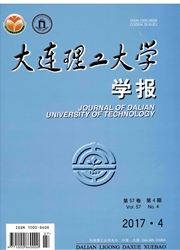

 中文摘要:
中文摘要:
在1L搅拌槽式反应器中设计、研究了恒压降温、低温升压2种甲烷水合方案来制备水合物.实验得出如下结论:①较大初始过冷度有助于甲烷气体的溶解、水合物晶体成核和生长;②低温升压水合过程储气量、水合速率分别为146.3 Vg·VH^-1、0.321 Vg·VH^-1·min^-1,高于恒压降温过程,为较优的操作方法.另外,对比人工样品和海底天然样品的形态特征,发现水合物形态与水合过程有关.同时,实验室模拟了海洋水合物生成过程.结果表明,水合物生长具有方向性,可为水合过程分析及水合反应器设计提供参考.
 英文摘要:
英文摘要:
Two methane hydration processes, constant-pressure and lower-temperature, low-temperature and raising- pressure, are designed and investigated in 1L stirred tank reactor. By experiment some conclusions are given as follows: ( 1 ) Higher initial sub-cooling is helpful to dissolution of methane gas, hydrate nucleation and crystal growth. (2) In low-temperature and raising-pressure process storage capacity and hydration rate were 146. 3 Vg· VH^-1 and 0. 321 Vg· VH^- 1·min^-1, respectively, which are better results than constant-pressure and lower-temperature process. In addition, configurations of two man-made samples are compared and analyzed with natural sample from sea floor. Results show that configurations of hydrates are related to hydration process. At the same time ,hydrate formation of sea floor is simulated in a laboratory. Experimental results indicate that hydrate crystal growth has directions, which can provide some references for hydrate process analysis and hydration reactor design.
 同期刊论文项目
同期刊论文项目
 同项目期刊论文
同项目期刊论文
 期刊信息
期刊信息
